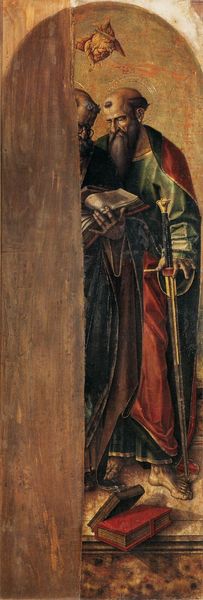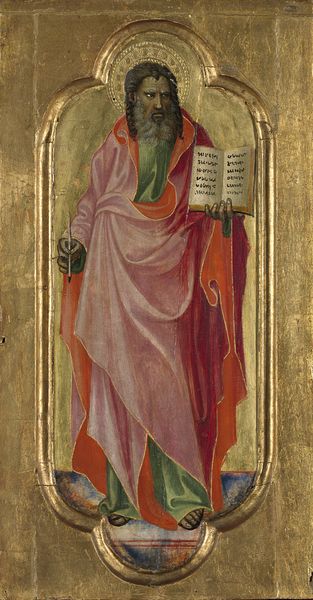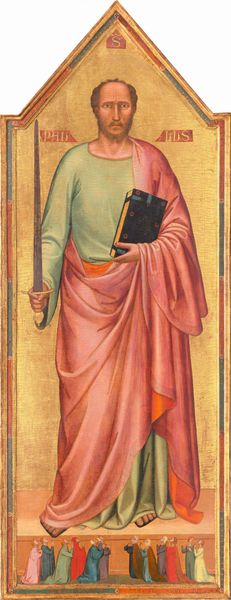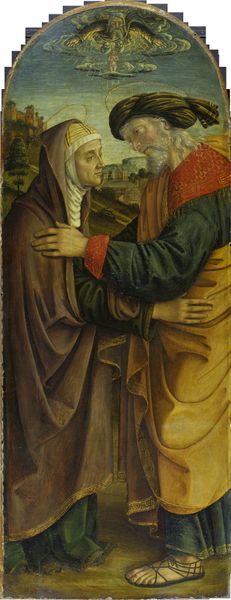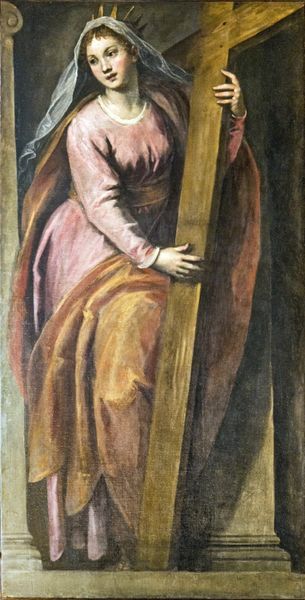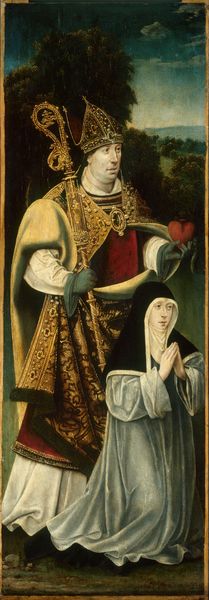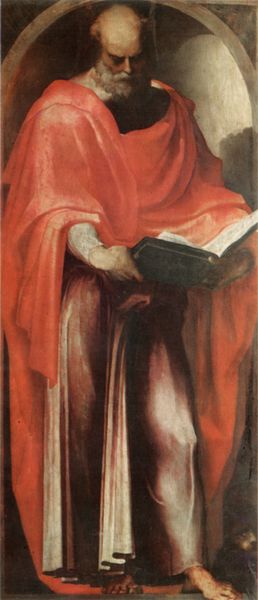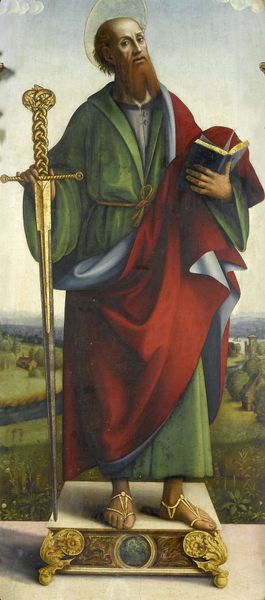
painting, oil-paint
#
portrait
#
painting
#
oil-paint
#
figuration
#
oil painting
#
christianity
#
history-painting
#
academic-art
#
italian-renaissance
#
portrait art
Copyright: Public domain
Editor: This is Perugino's "St. Anthony of Padua and St. Sebastian" from 1478. The juxtaposition of these two figures is striking; there’s St Anthony looking rather scholarly and pious with his book, alongside the dashing St. Sebastian holding that arrow! What initially jumps out at you when you see this piece? Curator: It’s the quiet drama, isn’t it? Perugino had a knack for it. These figures, they aren't just painted, they're posed, almost like actors on a stage. St. Anthony is all earthy humility in his simple robes, then BAM! – here’s St. Sebastian, positively glowing, looking almost aloof, that arrow kind of casually held, don't you think? It is also that stunning gold leaf background, reflecting that light... Editor: It’s like divine spotlighting! The symbolism seems quite deliberate... I guess the artist is playing with contrasts there. Curator: Absolutely. Anthony represents, let's say, earthly concerns of the Church. And then, we have Sebastian...well, think of him as beauty martyred for faith, bearing his suffering with grace! Ask yourself, how does this difference affect how the subjects express their relationship to faith? Editor: I never thought of them as counterparts before. Thinking about it this way makes me wonder about other seemingly different pairs of people from the period. Curator: Exactly! Perugino wasn't just decorating walls; he was crafting meditations on belief, on strength, and, ultimately, on the peculiar theatre of being human, wouldn’t you agree? This Renaissance quest for emotional intelligence still resonates.
Comments
No comments
Be the first to comment and join the conversation on the ultimate creative platform.

